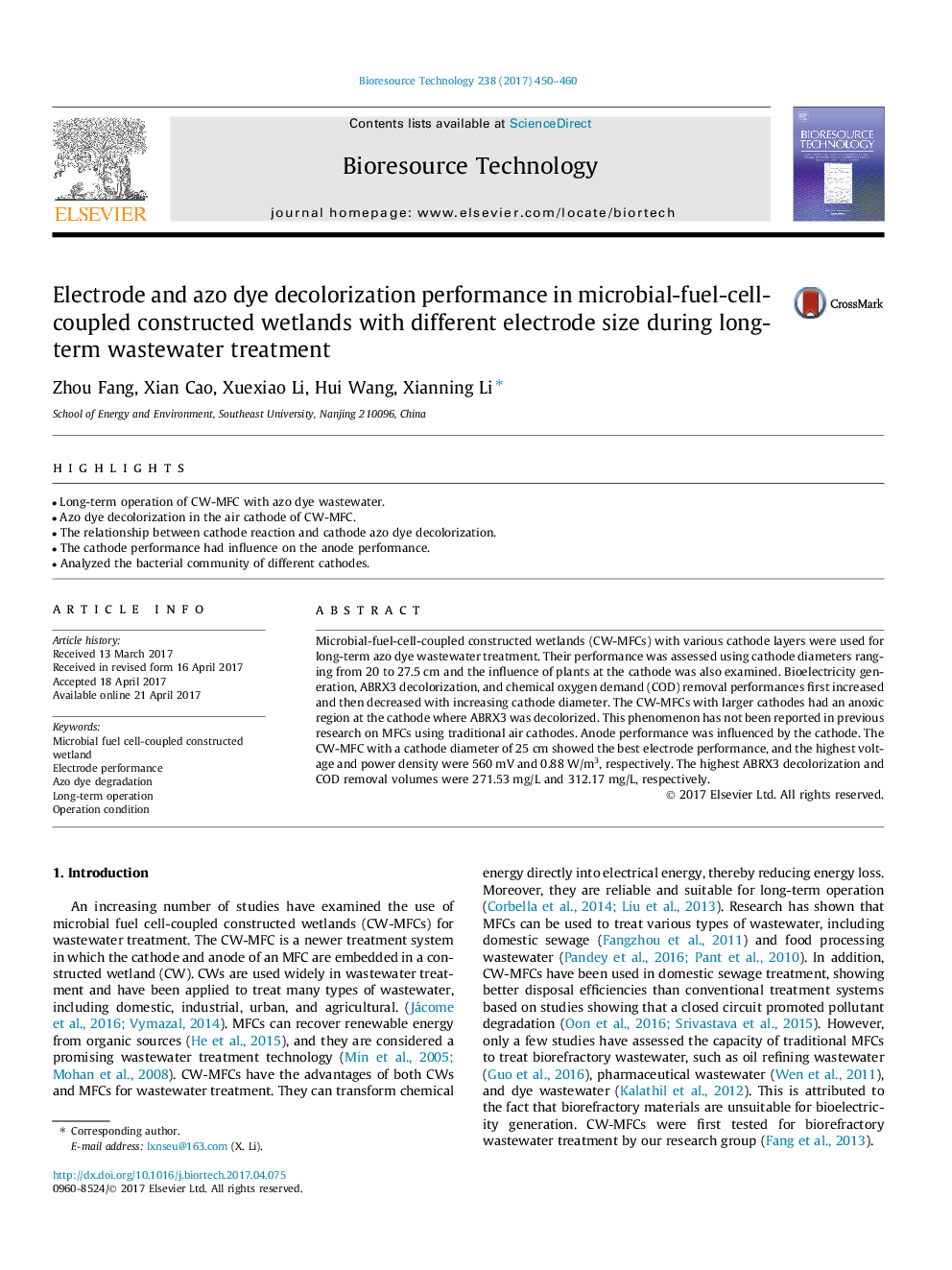| Article ID | Journal | Published Year | Pages | File Type |
|---|---|---|---|---|
| 4997223 | Bioresource Technology | 2017 | 11 Pages |
•Long-term operation of CW-MFC with azo dye wastewater.•Azo dye decolorization in the air cathode of CW-MFC.•The relationship between cathode reaction and cathode azo dye decolorization.•The cathode performance had influence on the anode performance.•Analyzed the bacterial community of different cathodes.
Microbial-fuel-cell-coupled constructed wetlands (CW-MFCs) with various cathode layers were used for long-term azo dye wastewater treatment. Their performance was assessed using cathode diameters ranging from 20 to 27.5 cm and the influence of plants at the cathode was also examined. Bioelectricity generation, ABRX3 decolorization, and chemical oxygen demand (COD) removal performances first increased and then decreased with increasing cathode diameter. The CW-MFCs with larger cathodes had an anoxic region at the cathode where ABRX3 was decolorized. This phenomenon has not been reported in previous research on MFCs using traditional air cathodes. Anode performance was influenced by the cathode. The CW-MFC with a cathode diameter of 25 cm showed the best electrode performance, and the highest voltage and power density were 560 mV and 0.88 W/m3, respectively. The highest ABRX3 decolorization and COD removal volumes were 271.53 mg/L and 312.17 mg/L, respectively.
